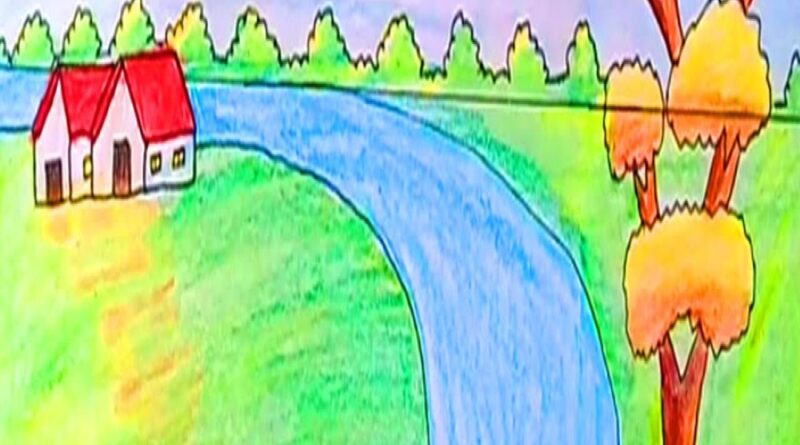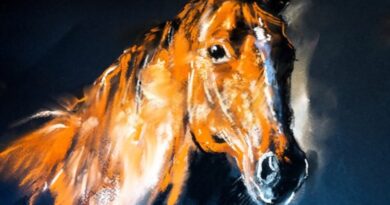HOW TO DRAW A LANDSCAPE IN INK QUICKLY?
Here is a small, simple demo that invites you to practice much more freely.
This complete exercise shows you how to work on contrast, gesture, and textures simultaneously with a simple pen. In this tutorial, I suggest drawing a landscape in ink quickly from a focal point (main subject), then developing the scene step by step, building the surroundings.
How to sketch and draw a landscape in ink step by step: complete demo
The essential steps for a successful ink drawing
I work with a reasonably standard ballpoint pen.
The idea here is to do something simply by working without a net.
Draw a horizon line, then build your drawing already thinking of the contrast (every line count).
I draw a basic house (a cube, then the roof).
No need to be overly specific: the main objective is to learn how to style things.
I will give a direction to the light to establish a visual cue that will serve me for the future.
It starts from the left so that the front facade will be brighter and the opposite side darker.
I draw a small shed on the left then a background.
The details appear little by little. Finally, I darken the roof a little more, emphasizing the shadow areas.
I make a few plants then a nearby tree while respecting the direction of the light.
I add vegetation in the background with a few strokes of the pen.
This exercise aims to let go to try to get an excellent graphic result without going into detail.
The scene must be visually believable.
Increase the contrast points as you hatch.
Do not hesitate to stay light in places to respect the different light zones.
Materialize traces on the ground, then gradually and quickly specify your drawing.
I add the shadows, then more vegetation and hatching.
First, do simple things that don’t require worrying about the prospect. Then, try to find an impressionistic way to describe and draw this landscape drawing.
Concentrate especially on the graphics and the overall rendering aspect, which must be as spontaneous as possible.
These trim lines and dots create a significant print detail that brings life and rhythm to your design.
This drawing exercise is perfect for sharpening your graphic style!
To draw this landscape in ink, we started with a simple cube that we gradually built up.
By regularly drawing with a pen, you will gradually find your identity and deal graphically with the different elements.
Ten steps to drawing a living countryside landscape
I start by drawing the horizon line. It is, of course, the basis in the construction of any landscape because it corresponds to the level of the viewer’s gaze.
- I then choose to draw a house in the distance. This first element is close to the horizon line. For the moment, I’m happy to do a quick drawing without shadows or details. On the left of the house, I add an “S” shaped path that crosses the composition vertically from back to front. This element punctuates my drawing by accentuating the effect of perspective. The “S” composition is a well-known composition rule, which helps balance and structure a design.
- To balance this composition, I add a tree on the left of the path in the foreground (the house being placed on the right in the background).
- Drawing a tree is a very spontaneous exercise that illustrates well drawing on the fly. Observe how I hold my pencil: this grip allows me to work directly with the values and the solid contrast.
- By working with the shadows on the trunk and the leaves, I choose the direction of the light on the whole scene.
- To balance the contrast, I add the vegetation in black on the right, at the house level. These elements are in the distance, and I do not try to detail them too much to keep the dynamism of my scene.
- I still draw some trees in the distance and some bushes near the tree. By adding these elements, I gradually work on the details and the contrast of the tree in the foreground.
- I detail the path a little by drawing bushes and the shadows cast for each element.
- I specify the house by adding some shadows.
Some tips to finish
To make a living drawing and keep the spontaneity of the line. It is important not to get too lost in the details and keep an overview of the composition. In this scene, I will bring more peace to the tree as it is placed in the foreground—basically, the farther apart the elements of a drawing, the less need to detail them. In the elaboration of a lively and dynamic sketch, the work of shadows and contrasts is as essential as the precision of the line.


